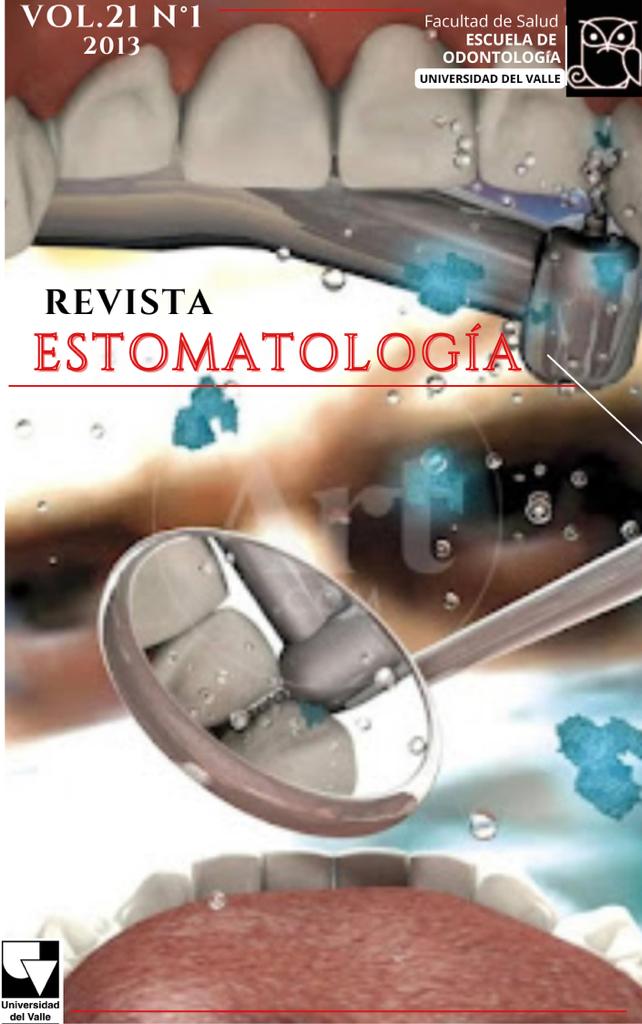Macroscopic in vitro analysis of titanium and fiberglass posts cemented in human premolars subjected to high temperatures for forensic purposes
Main Article Content
SUMMARY
Objective: To describe the macroscopic
changes of titanium and fiberglass posts
cemented in human premolars subjected
to high temperatures for forensic purposes.
Materials and methods: An in Vitro experimental
study was conducted to observe
the macroscopic physical changes of dental
tissues (enamel, dentine and cement), of
materials of conventional endodontic use
(gutta-percha Wave One® Maillefer Dentsply
®, endodontic cement with epoxic resin
Top Seal® Maillefer Dentsply®), posts
cement Relyx TM ARC 3M ESPE®) and
of the titanium posts (Tenax® Endodontic
Post System Coltene®) and fiberglass
posts (Tenax® Fiber Trans Coltene®) in
124 human teeth, exposed to five ranks of
temperature 200ºC, 400ºC, 600ºC, 800ºC,
1000ºC (three teeth at each temperature).
Results: The studied tissues and dental
materials used in this study, offer great
resistance to high temperatures, exhibiting
considerably variation of their macrostructure,
in a way that the physical changes
(dimensional stability, fissures, cracks,
fractures, texture, color, carbonization and
incineration) can serve to identify them and
to associate such changes to each rank of
specific temperature.
Conclusion: The titanium and fiberglass
posts cemented in human premolars offer
great resistance to the action of high tem-peratures. In the same way, they present
specific changes associated to the dental
tissues that can contribute with the process
of identification and medico-legal necropsy
of a corpse or burned, incinerated or carbonized
human rests.
Key words: Forensic dentistry, human
identification, dental tissues, dental materials,
endodontics, high temperatures.
- Camila Perez, Claudia Sanchez, Sandra Moreno, Freddy Moreno, Frequency and variability of dental morphology of temporal and permanent molars in a group of Caucasoid mestizos from Popayán (Cauca, Colombia) , Revista Estomatología: Vol. 25 No. 1 (2017)
- Ángela Ocampo, Juan David Sánchez, Carlos Humberto Martínez Cajas, Freddy Moreno, Correlation of ten non-metric dental traits between deciduous and permanent molars of three ethnic colombian groups. , Revista Estomatología: Vol. 17 No. 2 (2009)
- David Acosta, Andrea Melissa Porras, Freddy Moreno, Relation between the facial contour form, the dental arches and the upper central incisors shape in dental students from Universidad del Valle - Cali , Revista Estomatología: Vol. 19 No. 1 (2011)
- Pedro Asprilla, Kevin Franco, Jessica Morales, Freddy Moreno, Morphological characterization of permanent dentition of a group of Afrodescendants at Istmina (Chocó, Colombia) , Revista Estomatología: Vol. 25 No. 2 (2017)
- Liliana Marín, Freddy Moreno, Odontología forense: identificación odontológica. Reporte de casos , Revista Estomatología: Vol. 11 No. 2 (2003)
- Adolfo Contreras, Adriana Jaramillo, Freddy Moreno, Carlos Valencia, First meeting of the research groups of School of Dentistry at the Universidad del Valle “Constructing research strategies.” Opinion article , Revista Estomatología: Vol. 19 No. 2 (2011)
- Freddy Moreno, Sandra Moreno, Molar cusp pattern of human low molars. Literature review , Revista Estomatología: Vol. 24 No. 2 (2016)
- Johanna Aramburo, Angela Zapata, Sugey Zúñiga, Freddy Moreno, Stereomicroscopic analysis of dental materials employed in endodontic exposed to high temperatures , Revista Estomatología: Vol. 19 No. 2 (2011)
- Pedro Castro, Claudia Corral, Felipe García, Pilar León, Carlos Humberto Martínez Cajas, Freddy Moreno, Efficacy of four toothbrushes on removal of plaque with modified Bass technique in Dental Hygiene Students at Cali , Revista Estomatología: Vol. 16 No. 2 (2008)
- Sandra Moreno, Freddy Moreno, Dental Anthropology: clinical importance , Revista Estomatología: Vol. 15 No. 3 (2007)
Los autores/as conservan los derechos de autor y ceden a la revista el derecho de la primera publicación, con el trabajo registrado con la licencia de atribución de Creative Commons, que permite a terceros utilizar lo publicado siempre que mencionen la autoría del trabajo y a la primera publicación en esta revista.





